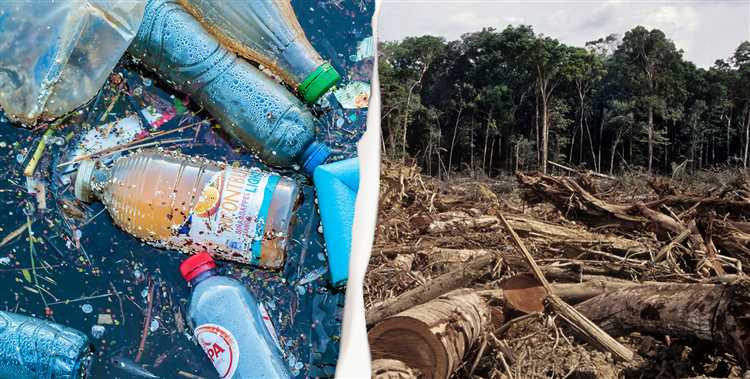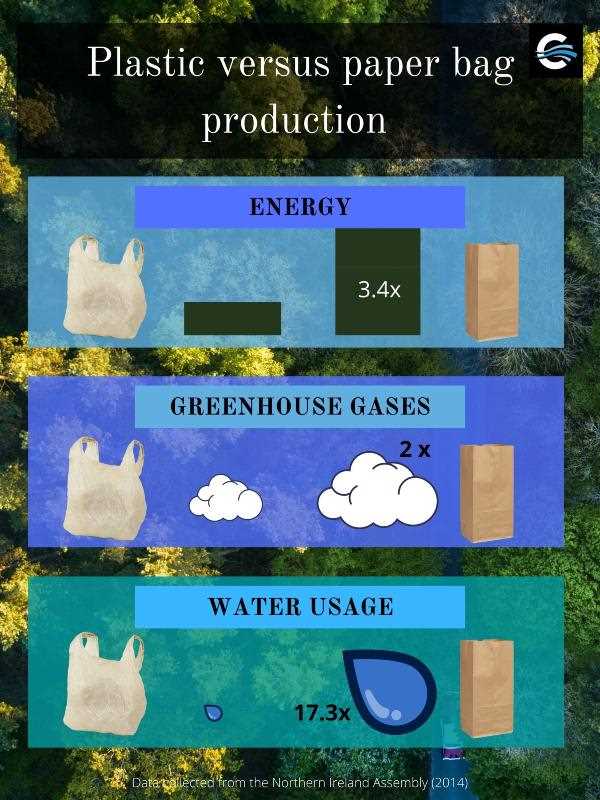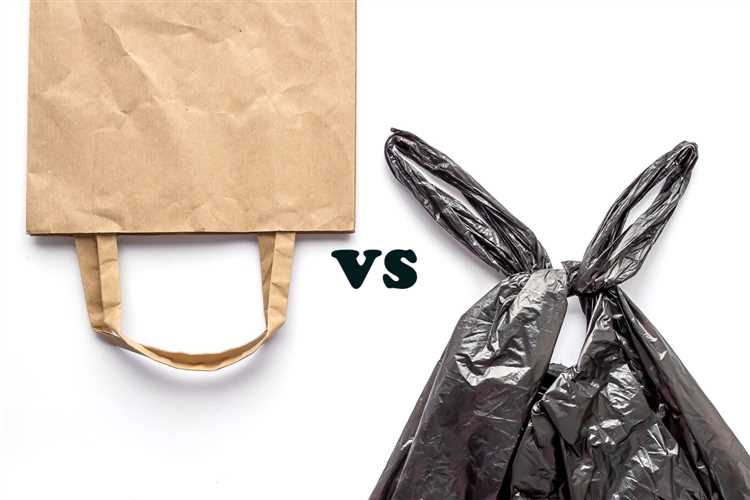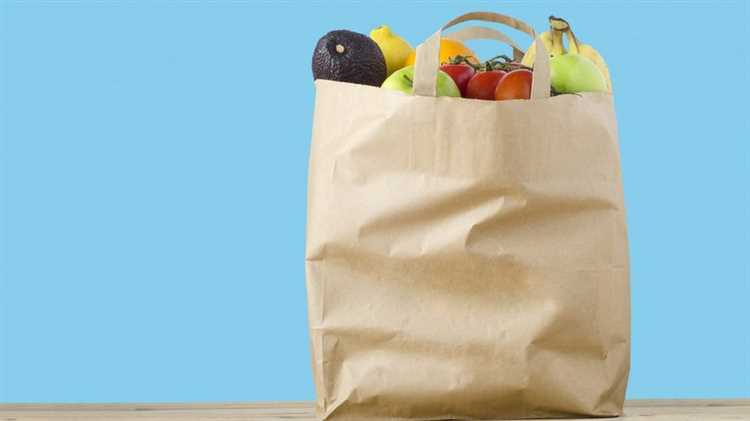In recent years, there has been a growing concern about the environmental impacts of plastic and paper. With the increasing awareness of the urgent need for sustainable practices, it is essential to understand the advantages and disadvantages of these two commonly used materials.
Plastic, with its versatile properties and durability, has become an integral part of our daily lives. However, its non-biodegradable nature has led to significant concerns about its impact on the environment. Plastic pollution is a severe problem, with vast amounts of plastic waste ending up in our oceans, harming marine life and ecosystems.
On the other hand, paper, being a natural and renewable resource, is often considered an eco-friendly alternative to plastic. However, the production of paper can also have negative consequences for the environment. It involves the cutting down of trees, deforestation, and the use of energy and chemicals in the manufacturing process.
Therefore, it is crucial to examine and compare the environmental impacts of plastic and paper to make informed decisions about our consumer choices and contribute to a more sustainable future.
- Plastic Pollution: A Growing Global Concern
- The Scale of the Problem
- Environmental and Health Impacts
- Understanding the Negative Ecological Impact
- 1. Deforestation
- 2. Chemical Pollution
- 3. Waste Disposal
- The Long-lasting Consequences on Marine Life
- Exploring Sustainable Paper Alternatives
- Q&A:
- What are the environmental impacts of plastic?
- What are the environmental impacts of paper?
- Which is worse for the environment: plastic or paper?
- What are some alternatives to plastic and paper?
- What can individuals do to reduce their plastic and paper consumption?
Plastic Pollution: A Growing Global Concern

Plastic pollution has become a pressing issue worldwide, with its negative impacts on the environment and human health becoming increasingly evident. As the production and consumption of plastic continue to rise, so does the amount of plastic waste generated. This waste often ends up in the natural environment, posing significant risks to ecosystems and wildlife.
The Scale of the Problem

The scale of plastic pollution is staggering. Every year, millions of tons of plastic waste are discarded, much of which finds its way into the oceans. It is estimated that there are currently over 150 million tons of plastic debris circulating in marine environments. This not only affects marine life but also causes extensive damage to coral reefs, seagrass beds, and other valuable ecosystems.
Environmental and Health Impacts
Plastic pollution has wide-ranging environmental and health impacts. The physical presence of plastic waste in ecosystems can suffocate and entangle marine animals, leading to injury and death. Additionally, plastic debris can break down into microplastics, which are ingested by marine organisms and can enter the food chain, ultimately posing a potential health risk to humans.
Furthermore, the production and disposal of plastic contribute to greenhouse gas emissions and depletion of fossil fuels, exacerbating climate change and global warming. The overall environmental impact of plastic pollution is far-reaching and demands immediate action.
- Plastic pollution threatens biodiversity and disrupts ecosystems
- It contaminates water sources and soil, affecting human health
- Plastic waste contributes to the global climate crisis
- Microplastics have been found in remote areas, including the Arctic
Efforts to combat plastic pollution include reducing unnecessary plastic use, promoting recycling and the development of biodegradable alternatives, and implementing stricter regulations on plastic production and disposal. It is crucial for individuals, communities, and governments to work together to address this growing global concern and protect our planet for future generations.
Understanding the Negative Ecological Impact
Plastic and paper production both have negative ecological impacts that must be taken into consideration when choosing between the two. These impacts include:
1. Deforestation

Paper production relies heavily on wood fibers, which often necessitates the cutting down of trees. This leads to deforestation, which can have severe consequences for the environment. Deforestation reduces biodiversity, destroys natural habitats, and contributes to climate change.
2. Chemical Pollution
The production of both plastic and paper involves the use of chemicals that can have harmful effects on the environment. The chemicals used in plastic production, such as solvents and dyes, can be toxic and pollute water sources. Similarly, the bleaching process involved in paper production releases chlorine compounds, which can contaminate bodies of water.
3. Waste Disposal

Both plastic and paper contribute to the growing problem of waste disposal. Plastic is known for its long lifespan and resistance to decomposition, often ending up in landfills or polluting natural environments such as oceans and rivers. On the other hand, paper waste contributes to deforestation when not properly recycled or disposed of, leading to additional negative ecological impacts.
By understanding the negative ecological impacts of both plastic and paper, we can make more informed choices about our consumption habits and work towards finding sustainable alternatives.
The Long-lasting Consequences on Marine Life
Plastic pollution is having a devastating impact on marine life, with long-lasting consequences that threaten the delicate balance of our ecosystems. The vast amount of plastic waste that enters our oceans each year poses a serious threat to marine animals, their habitats, and the entire food chain.
Marine animals such as turtles, dolphins, whales, and seabirds are particularly vulnerable to the harmful effects of plastic pollution. They often mistake plastic debris for food or become entangled in it, leading to injury, suffocation, and even death. Plastic waste also leaches harmful chemicals into the water, further endangering marine life.
In addition to the direct harm caused by plastic pollution, it also disrupts the marine ecosystem as a whole. Microplastics, tiny particles of plastic less than 5mm in size, have been found in alarming quantities in the oceans. These microplastics are ingested by small marine organisms, which then enter the food chain. This means that even the smallest organisms in the ocean are affected by plastic pollution, with potentially catastrophic consequences for the entire ecosystem.
| Effects on Marine Life | Consequences |
|---|---|
| Entanglement | Injury, suffocation, death |
| Ingestion | Blockage of digestive system, poisoning |
| Habitat Destruction | Loss of breeding and feeding grounds |
| Chemical Pollution | Endocrine disruption, reproductive issues |
The consequences of plastic pollution on marine life are not only immediate but also long-lasting. Plastic debris can take hundreds of years to break down in the marine environment, persisting for generations and continuing to harm marine ecosystems. This means that the damage caused by plastic pollution is not easily reversible and will have far-reaching consequences for the future of our oceans.
It is crucial that we take action to reduce plastic pollution and protect marine life. This can be done through initiatives such as recycling, reducing the use of single-use plastics, and supporting organizations working to clean up our oceans. By taking steps to mitigate the impacts of plastic pollution, we can ensure a healthier and more sustainable future for marine life.
Exploring Sustainable Paper Alternatives
While plastic is often demonized for its negative impact on the environment, it’s important to also consider the environmental implications of paper consumption. Paper production contributes to deforestation, uses large amounts of water, and emits greenhouse gases. To mitigate these issues, there are various sustainable paper alternatives to explore.
Recycled Paper: One of the most readily available alternatives is recycled paper. By using recycled materials, this type of paper reduces the demand for virgin pulp and helps to divert waste from landfills. It requires less energy and water to produce and has a lower carbon footprint compared to conventional paper.
Bamboo Paper: Bamboo is a highly sustainable and fast-growing plant, making it an excellent alternative to timber for paper production. Unlike trees, bamboo regenerates quickly and does not require replanting. It also absorbs more carbon dioxide and produces more oxygen than trees, making it a more environmentally friendly option.
Agrofiber Paper: Agrofibers are plant-based fibers derived from agricultural waste, such as sugarcane bagasse or wheat straw. These fibers can be used to produce paper, reducing the reliance on timber while also utilizing waste materials. Agrofiber paper has a lower environmental impact, as it utilizes resources that would otherwise be discarded.
Hemp Paper: Hemp is a versatile and sustainable crop that can be used to make paper. It grows quickly and requires fewer pesticides and fertilizers compared to other crops. Hemp paper is more durable than traditional paper and can be recycled more times without significant degradation in quality.
Alternative Materials: In addition to the aforementioned alternatives, there are other innovative and sustainable materials being explored for paper production. Examples include kenaf, a fibrous plant similar to jute, and elephant grass, a tall perennial grass that grows quickly and can be cultivated in marginal lands.
By exploring and adopting these sustainable paper alternatives, individuals and industries can contribute to the reduction of deforestation, water usage, and carbon emissions associated with paper production. It is important to make informed choices and opt for environmentally friendly alternatives to ensure a more sustainable future.
Q&A:
What are the environmental impacts of plastic?
Plastic has a significant negative impact on the environment. It is a non-biodegradable material, meaning it does not break down naturally over time. This leads to plastic pollution in ecosystems such as oceans, rivers, and forests. Plastic waste also contributes to greenhouse gas emissions when it is incinerated, leading to climate change. Additionally, the production of plastic requires the extraction of fossil fuels, which further contributes to environmental degradation.
What are the environmental impacts of paper?
Although paper is a renewable resource, its production still has negative environmental impacts. Deforestation is a major concern as it leads to habitat destruction and loss of biodiversity. Paper production also requires a large amount of water and energy, contributing to water scarcity and greenhouse gas emissions. Additionally, the disposal of paper waste can contribute to landfill pollution.
Which is worse for the environment: plastic or paper?
Both plastic and paper have negative environmental impacts, but it is difficult to determine which is worse overall. Plastic is non-biodegradable and contributes to plastic pollution in ecosystems, while paper production leads to deforestation and habitat destruction. However, plastic production requires the extraction of fossil fuels, which contribute to climate change. Ultimately, reducing consumption of both plastic and paper products is the best solution for the environment.
What are some alternatives to plastic and paper?
There are several alternatives to plastic and paper that have less impact on the environment. Some options include using reusable bags and containers instead of plastic bags, opting for digital receipts instead of paper receipts, and using cloth napkins and towels instead of paper ones. Additionally, biodegradable materials such as bamboo and corn-based plastics can be used as alternatives to traditional plastics.
What can individuals do to reduce their plastic and paper consumption?
There are several steps individuals can take to reduce their plastic and paper consumption. They can start by using reusable bags, water bottles, and food containers instead of single-use plastic ones. Going paperless by opting for digital documents and receipts can also help. Additionally, individuals can choose products with minimal packaging and recycle any plastic or paper waste they do produce. Finally, supporting companies and organizations that prioritize sustainability can contribute to reducing overall plastic and paper consumption.